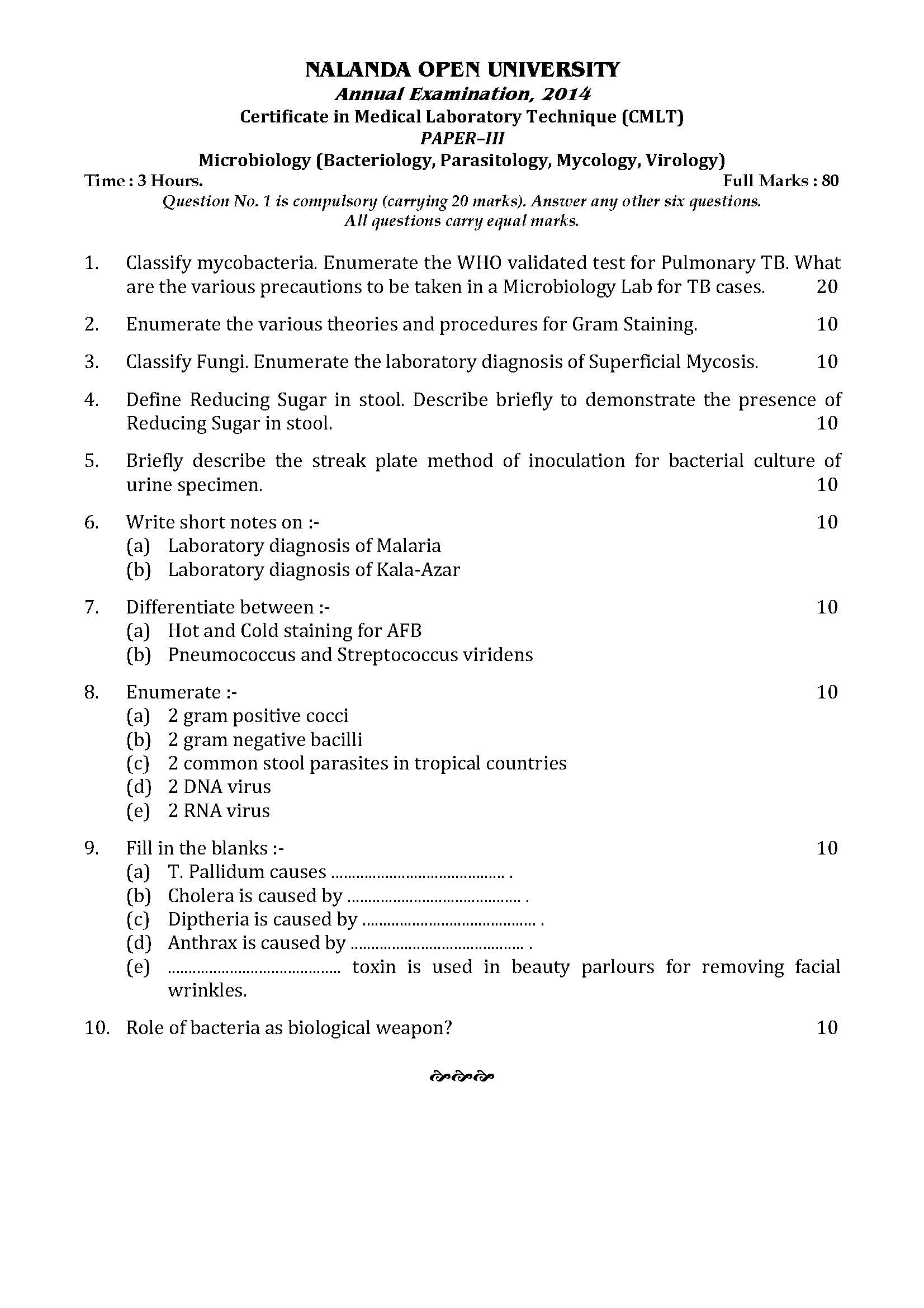LOYOLA COLLEGE (AUTONOMOUS), CHENNAI – 600 034
B.Sc. DEGREE EXAMINATION – PLANT BIOLOGY & PLANT BIO-TECH.
FIRST SEMESTER – NOVEMBER 2010
PB 1505/PB 1502 /PB 1500- PLANT DIVERSITY – I (ALGOLOGY, MYCOLOGY, BRYOLOGY)
Date : 10-11-10 Dept. No. Max. : 100 Marks
Time : 1:00 – 4:00
PART – A(20 marks)
ANSWER ALL QUESTIONS:
- Choose the Correct Answer: (5 x 1 = 5)
- Agar-agar is manufactured from
- Ectocarpus b) Polysiphonia c) Sargassum d) Gelidium
- When Filaments of Anabaena break in small pieces of two or more cells, they are called
- Hormospores b) Hormogonia c) Hypnospores d) Hormocysts
- The habit of Volvox is
- a) Unicellular b) Filamentous c) Thalloid d) Colonial
- Fungi which obtained food from dead organic material is called
- Parasitic b) Saprophytic c) Symbiotic d) Predacious
- The endophytic algae present in the thallus of Anthoceros is
- a) Nostoc b) Vaucheria c) Oscillatoria d) Volvox
- State whether the following are True or False: (5 X 1 = 5)
- The fungus which is important in genetic studies is Rhizopus.
- Members of Hepaticopsida are popularly known as liverworts.
- The Zoospore of Albugo is reniform.
- Elaters are cells with spiral thickening that help in dispersing spores.
- The brown alga Ectocarpus contains a brown pigment called as Phycocyanin.
III. Complete the following: (5 X 1 = 5)
- Lichen which possess leaf like thalli with lobed margins are called …………………..
- When motile gametes taking part in fusion are different in size, it is known as ………..
- Thallus with multinucleate, aseptate condition is said to be …………………
- The fruiting body of Polyporus is known as ……………………………………………
- The central fertile region of capsule of Funaria is called ………………………………
- Answer ALL, each in about 50 words: (5 X 1 = 5)
- What is Protonema?
- Write 2 lines on Heterocyst.
- What is Budding?
- Comment on Biofertilizers.
- Write any 2 economic importance of Algae.
PART – B
Answer the following each within 500 words.
Draw diagrams or flowcharts wherever necessary. (5 X 7 = 35 marks)
- Explain any two life cycle patterns in algae. Substantiate your answer with schematic representation.
(OR)
Give the salient features of Chlorophycophyta.
- List five salient features of Vaucheria.
(OR)
Draw and describe the sporangia of Ectocarpus.
- Describe briefly any 3 sexual fruiting bodies you have studied in the fungi.
(OR)
Write short notes on:
- Nutrition of Fungi b) Vegetative reproductive structures in fungi.
- Explain briefly the structure of thallus of Lichens.
(OR)
Explain the external and internal structures of the basidiocarp of Polyporus.
- Describe the Sporophyte of
(OR)
Comment on the sex organs of Bryophytes.
PART – C
Answer any three of the following each within 1200 words.
Draw diagrams or flowcharts wherever necessary. (3 X 15 = 45 marks)
- Write any three different kinds of a sexual reproductive methods in algae.
- Trace the Triphasic life cycle of Polysiphonia.
- Describe the salient features of any 3 classes in fungi.
- Explain the life cycle of Rhizopus.
- Compare the Sporophyte of Marchantia and Anthoceros.
